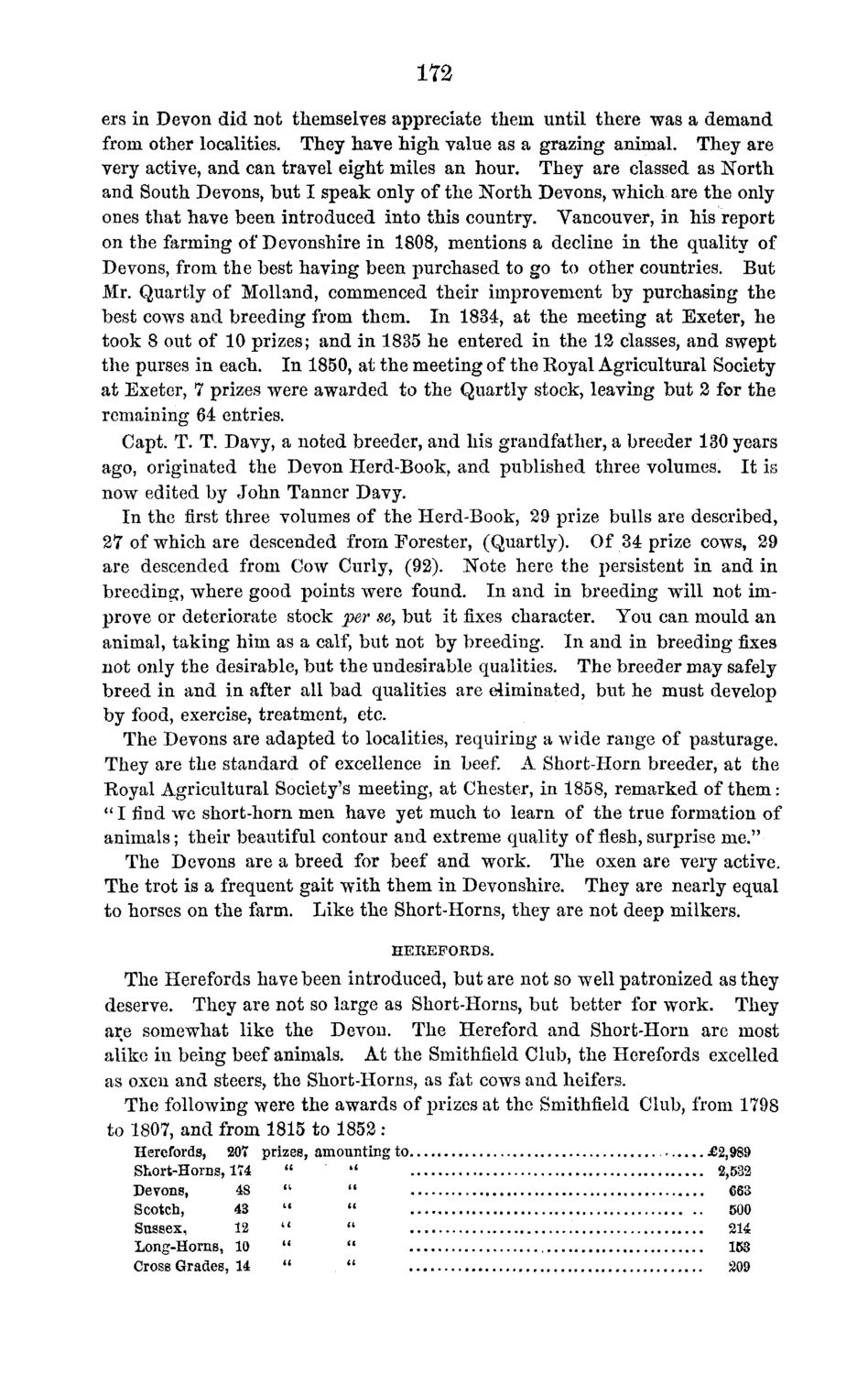| |
| |
Caption: Board of Trustees Minutes - 1870
This is a reduced-resolution page image for fast online browsing.

EXTRACTED TEXT FROM PAGE:
172 ers in Devon did not themselves appreciate them until there was a demand from other localities. They have high value as a grazing animal. They are very active, and can travel eight miles an hour. They are classed as North and South Devons, but I speak only of the North Devons, which are the only ones that have been introduced into this country. Vancouver, in his report on the farming of Devonshire in 1808, mentions a decline in the quality of Devons, from the best having been purchased to go to other countries. But Mr. Quartly of Molland, commenced their improvement by purchasing the best cows and breeding from them. In 1834, at the meeting at Exeter, he took 8 out of 10 prizes; and in 1835 he entered in the 12 classes, and swept the purses in each. In 1850, at the meeting of the Koyal Agricultural Society at Exeter, 7 prizes were awarded to the Quartly stock, leaving but 2 for the remaining 64 entries. Capt. T. T. Davy, a noted breeder, and his grandfather, a breeder 130 years ago, originated the Devon Herd-Book, and published three volumes. It is now edited by John Tanner Davy. In the first three volumes of the Herd-Book, 29 prize bulls are described, 27 of which are descended from Forester, (Quartly). Of 34 prize cows, 29 are descended from Cow Curly, (92). Note here the persistent in and in breeding, where good points were found. In and in breeding will not improve or deteriorate stock per se, but it fixes character. You can mould an animal, taking him as a calf, but not by breeding. In and in breeding fixes not only the desirable, but the undesirable qualities. The breeder may safely breed in and in after all bad qualities are eliminated, but he must develop by food, exercise, treatment, etc. The Devons are adapted to localities, requiring a wide range of pasturage. They are the standard of excellence in beef. A Short-Horn breeder, at the Royal Agricultural Society's meeting, at Chester, in 1858, remarked of them: " I find we short-horn men have yet much to learn of the true formation of animals; their beautiful contour and extreme quality of flesh, surprise me." The Devons are a breed for beef and work. The oxen are very activeThe trot is a frequent gait with them in Devonshire. They are nearly equal to horses on the farm. Like the Short-Horns, they are not deep milkers. HEREFORD S. The Herefords have been introduced, but are not so well patronized as they deserve. They are not so large as Short-Horns, but better for work. They are somewhat like the Devon. The Hereford and Short-Horn are most alike in being beef animals. At the Smithfield Club, the Herefords excelled as oxen and steers, the Short-Horns, as fat cows and heifers. The following were the awards of prizes at the Smithfield Club, from 1798 to 1807, and from 1815 to 1852 : Herefords, 20T prizes, amounting to Short-Horns, 174 " " Devons, 48 " " Scotch, 43 " " Sussex, 12 " " Long-Horns, 10 " " Cross Grades, 14 " " .£2,989 2,532 663 500 214 153 209
| |